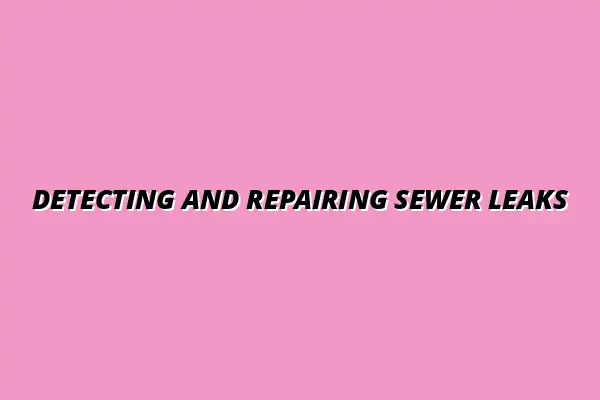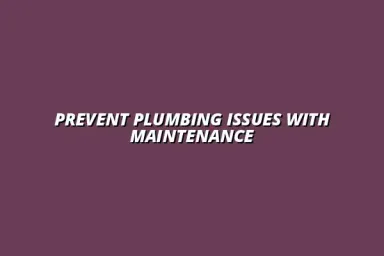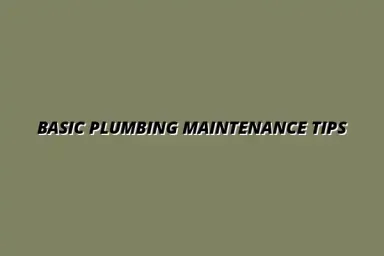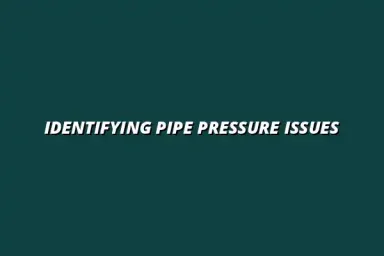Understanding Sewer Line Leaks
What is a Sewer Line Leak?
A sewer line leak occurs when there is a break or hole in the sewer pipe, causing wastewater to escape. This can lead to serious issues for homeowners, from unpleasant odors to significant structural damage. Understanding what a sewer line leak is and its implications is crucial for maintaining a safe and healthy home environment.
These leaks can result in water pooling in your yard, which not only damages your landscaping but can also pose health risks. This pooling often indicates that the sewage is seeping into the ground, leading to contamination. If left untreated, it may result in costly repairs and extensive damage to your property. Learning how to detect hidden pipe leaks at home is a crucial first step in preventing larger issues.
Common Causes of Sewer Line Leaks
There are several reasons why sewer line leaks happen, and being aware of these can help you prevent them. Some common causes include:
- Tree Roots: Roots from nearby trees can grow into pipes, causing cracks or blockages. Tree roots and sewer damage is a common problem.
- Corrosion: Older pipes can corrode over time, weakening their structure and leading to leaks.
- Ground Movement: Shifts in the earth due to natural settling or seismic activity can create pressure on pipes.
- Pipe Damage: Factors like heavy traffic above ground can lead to physical damage to sewer lines.
By understanding these common causes, homeowners can take proactive measures to protect their sewer lines from leaks. Regular inspections and maintenance can help identify potential problems before they escalate. Regular cleaning of your main sewer line can also help prevent future issues; check out these tips on cleaning your main sewer line.
Identifying Signs of a Sewer Line Leak
Visual Indicators of a Leak
One of the first things you might notice with a sewer line leak are visual signs in your yard. Keep an eye out for:
- Wet Spots: Areas of unusually wet soil can indicate a leak.
- Pooling Water: Standing water in your yard suggests a possible sewage leak.
- Lush Grass Patches: If certain spots are greener than others, it may be due to nutrient-rich sewage seeping into the soil.
Knowing these signs can help you quickly address any potential leaks before they cause more damage. If you notice any of these indicators, it's essential to investigate further to determine if a sewer line leak is present.
Auditory Signs of a Sewer Line Issue
Sometimes, the sounds in your home can tell you if there’s a problem with your sewer lines. Listen for these sounds:
- Gurgling Drains: This sound often indicates trapped air in your plumbing due to a blockage.
- Constant Flushing Toilets: If your toilet seems to be flushing on its own, it could signal a leak.
- Bubbling Sounds: Bubbling noises coming from sinks or toilets can point to sewer system issues.
Being aware of these auditory signs can help you catch problems early. If you hear these sounds regularly, consider having a professional evaluate your sewer system. Similar issues can also arise with leaking bathroom pipe joints so it's good to know how to handle those too.
Odor Detection: The Smell Test
Another important sign of a sewer line leak is unpleasant odors in or around your home. If you notice a strong odor of sewage, it could indicate a problem. Here’s what to do:
- Check for Odors: Pay attention to any foul smells coming from drains or your yard.
- Identify the Source: Determine if the smell is localized or widespread.
- Act Quickly: If you detect a sewage odor, it’s best to address it immediately to prevent health hazards.
Identifying these odors early can prevent further complications. If the smell persists, it’s wise to contact a professional for inspection. Ignoring a sewer pipe backup can lead to more serious problems, so knowing the next steps to take is important.
Monitoring Water Usage and Bill Increases
Lastly, keeping track of your water usage can provide clues about potential sewer line leaks. Here’s how you can monitor this:
- Review Your Water Bill: Look for any unusual spikes in your monthly bill.
- Check Water Usage: Compare your current usage with past months to spot significant changes.
- Conduct a Water Audit: Take note of your water usage habits and see if they align with your bill.
By being aware of these changes, you can catch leaks early, potentially saving you money and hassle in the long run. If you notice a spike in your bill without a change in usage habits, it may be time to investigate further. Preventing water heater leaks is another important aspect of home maintenance; check out these tips to prevent water heater leaks.
Effective Solutions for Fixing Sewer Line Leaks
When it comes to **fixing sewer line leaks**, there are several methods available. Understanding these repair options allows homeowners to make informed decisions based on their specific situations. The main methods include traditional excavation, trenchless repair, and pipe relining. Each option has its benefits and drawbacks that cater to different needs.
Traditional excavation involves digging up the ground to access the damaged pipe, which can be labor-intensive and disruptive. On the other hand, trenchless repair is less invasive and involves minimal digging, often using existing access points. Finally, pipe relining is a method where a new liner is inserted into the existing pipe, creating a new surface without the need for extensive excavation.
Understanding Repair Options
- Traditional Excavation: The most thorough method, allowing for complete replacement of damaged sections.
- Trenchless Repair: A modern technique that minimizes disruption to your yard, using specialized equipment to fix the pipe without extensive digging.
- Pipe Relining: A cost-effective solution that reinforces existing pipes, extending their lifespan without major excavation.
Choosing the Right Repair Method for Your Situation
Selecting the most suitable repair method depends on several factors. First, consider the **cost** of each option, as this can vary significantly. Additionally, the **severity of the leak** plays a crucial role; more severe leaks might require extensive repairs. Lastly, the **property layout** and accessibility of the sewer line can influence the choice of method.
- Cost: Assess your budget to determine which repair methods are financially feasible.
- Severity of Leak: Evaluate the condition of your sewer line to understand the urgency and type of repair needed.
- Property Layout: Analyze how your yard's structure may affect the repair process.
Preventive Measures to Avoid Future Leaks
Taking proactive steps can significantly reduce the chances of encountering sewer line leaks again. Regular maintenance is crucial for keeping your sewer lines in good condition. By conducting routine inspections and cleaning, homeowners can catch potential issues before they escalate into costly repairs. For those in the Birmingham area, consider a reliable plumber in Billesley, Birmingham for any needed repairs.
Routine Maintenance Practices
Implementing a solid maintenance routine can extend the life of your sewer lines. Here are some effective practices:
- Regular Inspections: Schedule periodic checks to identify any early signs of trouble.
- Cleaning: Keep the lines clear of debris and buildup to prevent blockages.
- Monitoring: Keep an eye on water usage and bill changes to spot unusual patterns.
Landscape Management to Protect Sewer Lines
Proper landscaping can also help protect sewer lines from damage, especially from tree roots. Choosing the right plants and maintaining your garden can reduce risks. Here are some landscaping tips to consider:
- Avoid Planting Trees: Stay clear of planting large trees near your sewer lines.
- Choose Shallow-Rooted Plants: Opt for plants with less invasive root systems.
- Maintain Your Yard: Regularly trim back any overgrown vegetation around the sewer lines.
Addressing Frequently Asked Questions
Understanding what to expect regarding costs, timeframes, and immediate actions can ease your concerns about sewer line issues. Having answers to common questions can empower homeowners to take effective action when leaks occur.
How much does it cost to fix a sewer line leak?
Costs can vary widely depending on the method chosen for repair. Generally, traditional excavation tends to be more expensive than trenchless repair or pipe relining. Factors such as the leak’s severity and local labor costs also play a role in determining the final price.
How long does it take to repair a sewer line leak?
The time required for repairs depends on the method used and the extent of the damage. Traditional excavation can take several days, while trenchless methods may only require a few hours. Pipe relining generally falls somewhere in between, depending on the specific conditions of the job.
What should I do if I suspect a sewer line leak?
If you suspect a leak, the first step is to monitor your water usage and look for visual signs. Next, consider conducting simple tests, such as the food coloring test. If you continue to notice issues, don’t hesitate to contact a professional for a thorough inspection.
Final Thoughts and Recommendations
In conclusion, understanding effective solutions for fixing sewer line leaks is essential for homeowners. Early detection, along with proactive maintenance, is key to preventing severe issues. I encourage everyone to engage with professionals for inspections and repairs as necessary to safeguard their homes.
Taking these steps can save you money and stress down the line! Don’t wait for a minor leak to develop into a major problem—stay ahead with regular checks and maintenance.

 Kiran Almasi
Kiran Almasi

